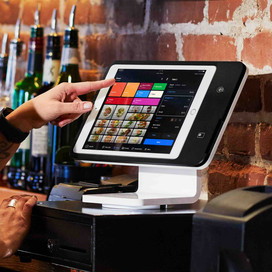Table of contents
“Take five” is shorthand for break time in restaurants — a welcome opportunity for your front-of-house or kitchen staff to grab a coffee and clear their minds.
Granting regular employee breaks is a common practice that many owners apply when managing a restaurant. And many state and federal laws require breaks or mandate compensation for breaks.
But it’s one thing to grant breaks. It’s another to invest in employee time tracking to ensure your employees are taking them. And there are two reasons that it’s important to enforce and monitor regular breaks:
Employee breaks can improve productivity.
It’s not hard to understand why restaurant managers want employees to take some time to relax, since giving workers a rest helps boost their mood — and more.
Research shows that breaks can improve employee decision making, restore their motivation, and boost their productivity and creativity. That’s because working for long periods of time can lead to stress and exhaustion. Taking breaks refreshes you and replenishes your mental resources.
It’s important to track breaks with employee time tracking so you can ensure that every employee is taking the time they need to recharge.
There’s no doubt that breaks are good for employees. But as an employer, you should be strategic about the timing of these breaks so they don’t have a negative impact on your business.
Look at your restaurant sales data (by day, hour, and employee) to figure out your busiest shifts so that you have enough coverage during peak times.
Employee time tracking helps you abide by the law.
While it might feel like employee breaks are part of U.S. work culture, the fact is that federal law does not actually require breaks. But there are states that do have regulations about breaks.
It’s important to note that, according to federal regulations, breaks are different from meal periods. Breaks range from five minutes to about 20 minutes, while meal periods are usually around 30 minutes long.
Meal periods are designated times for employees to eat, so they must be completely relieved of work duties during that time. Meal times are not counted as paid work time, and they do not count toward total hours worked and overtime.
Businesses that do offer breaks must consider that time as work hours that must be compensated. It must be counted toward the employee’s total hours logged when determining whether the employee worked overtime.
And, when it comes to overtime, federal law states that you must compensate employees at a rate of at least one-and-one-half times their regular rate of pay for each hour they work in excess of 40 hours a week. So, break tracking is especially important to ensure you’re in compliance with overtime law and properly compensating employees.
When creating your company’s break and meal period policies, do your research and make sure your rules are in compliance with state and federal law.
How to track employee breaks
Step 1: Create an employee break policy.
Setting a policy with clear parameters at your restaurant is the best way to make sure everyone is on the same page when it comes to break times.
Your guidelines should outline whether employees need to work a certain number of hours before they take a 15-minute break. Or you might put rules in place so your employees aren’t on their breaks at the same time. Make sure the details of the guide are specific to your workplace.
For example, if you make employees put away their mobile phones when they come to work, you could allow them to use phones during breaks. (This has a positive effect on employees’ well-being.)
If employees smoke during their breaks, decide whether to create a policy about how far away from the building they must stay while smoking.
When managing a restaurant, decide whether employees get free or discounted food during their meal breaks. (Remember that meals and discounts can have tax implications.)
Step 2: Set expectations for employees early on.
Once you have a policy, you need to communicate it. Make your expectations clear from the get-go so employees know what they need to do to succeed.
Include your break policy (and other company policies) in your training program for new and existing employees. Also review federal and state labor laws so that workers understand their rights.
Step 3: Look for a restaurant POS with employee-tracking capabilities.
The easiest, most accurate way to keep track of employees’ time is with a restaurant POS that has an integrated employee break function. Square for Restaurants, for example, is a point of sale with a built-in employee time-tracking solution.
The right restaurant point of sale can help you make better informed decisions. Looking at your sales, analytics, and team management reports together can inform how much staff to schedule or what products you ask them to push. And if you can connect it with other software, like payroll or email marketing, it’s a real time saver, too.
![]()












